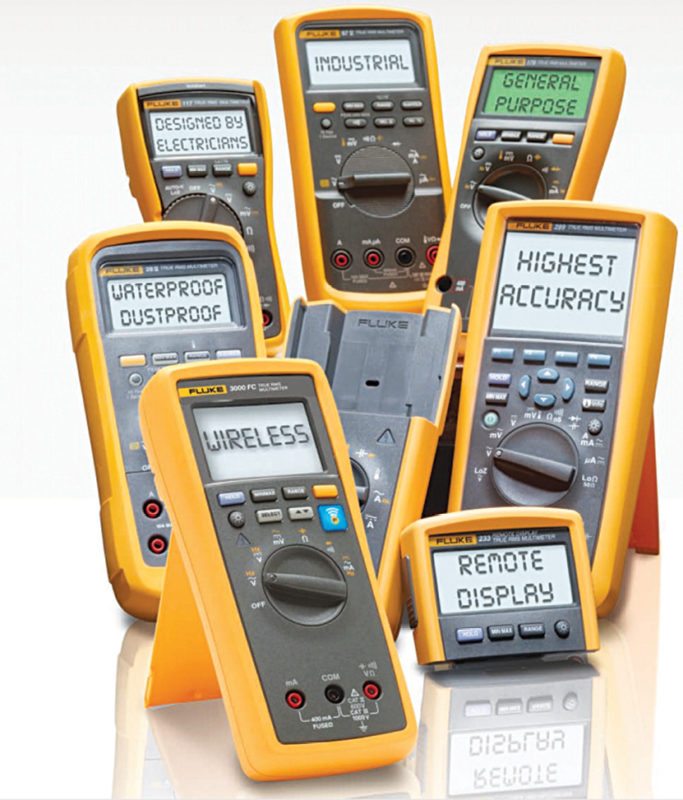
Choosing the right digital multimeter (DMM) requires thinking about what you will be using it for. Evaluate your basic measurement needs and job requirements and then take a look at special features/functions built into many DMMs. Think about whether you need it for basic measurements or for more advanced troubleshooting options.
Aspects to consider
Resolution and accuracy. Resolution of a DMM is expressed in the number of digits the unit can display. For example, a 4½ DMM has four full digits that display values from 0 to 9 and the fractional digit, which is the most significant digit in the display. Fractional digit is either 0 or 1. Such a meter shows positive or negative values from 0 to 19,999.
Accuracy of a DMM is different from display resolution. It is the maximum allowable limit of error in readings. All DMM manufacturers express accuracy specifications as ±(% of reading+number of least significant digit).
Working environment.
Measurements types. Almost all DMMs make voltage, current and resistance measurements. Most make accurate AC measurements with sinusoidal signals, but when such signals are not simple sine waves, their accuracy suffers. If you need to make AC measurements of signals that have a lot of harmonic distortion, you may want to purchase a DMM that makes true-rms AC measurements. These cost more but will make more accurate measurements.
Many DMMs are designed to solve complex problems in electronics, plant automation, power distribution and electromechanical equipment. With the ability to log data and review it graphically onscreen, you can solve problems faster and help minimise downtime. When selecting a digital multimeter (DMM) for data logging, important specifications include the speed at which the DMM can make measurements and the amount of memory it requires.
To work safely near electrical panels while wearing less personal protective equipment, or to avoid the risk of being bogged down while chasing interrelated events, one has to adapt to wireless DMM.
True-rms versus average-responding DMMs. Basically there are two types of DMMs: average responding and true-rms. The latter is a consistent and standard way to measure and compare dynamic signals of all shapes and sizes, whereas the former is calibrated for sine-wave inputs only.
Average-responding meters normally work well for linear loads (standard induction motors, resistance heating, incandescent lights and more), but if non-linear loads (electronic/electric-discharge lighting, adjustable-speed drive systems and so on) are present, errors occur, which could make the readings lower than expected. If you want to measure non-linear loads such as those found at electronic controls, you should choose true-rms.
DMM input impedance. It is especially important to select a DMM with high impedance for applications requiring measurement of sensitive electronics or control circuits to ensure accuracy of the readings.











The article seems mostly about general electrical applications.
Electronics field requires micro and milli range of voltages and currents, among other things.
The ability to select a wide range of voltages, currents and ohms are important.
You would realise the problem only when you cannot measure small signals (milli volt/current) of a BJT or JFET or sensor.
Also, test leads/probes along with saftey ratings should be flexible and strong.
These points have not been covered.